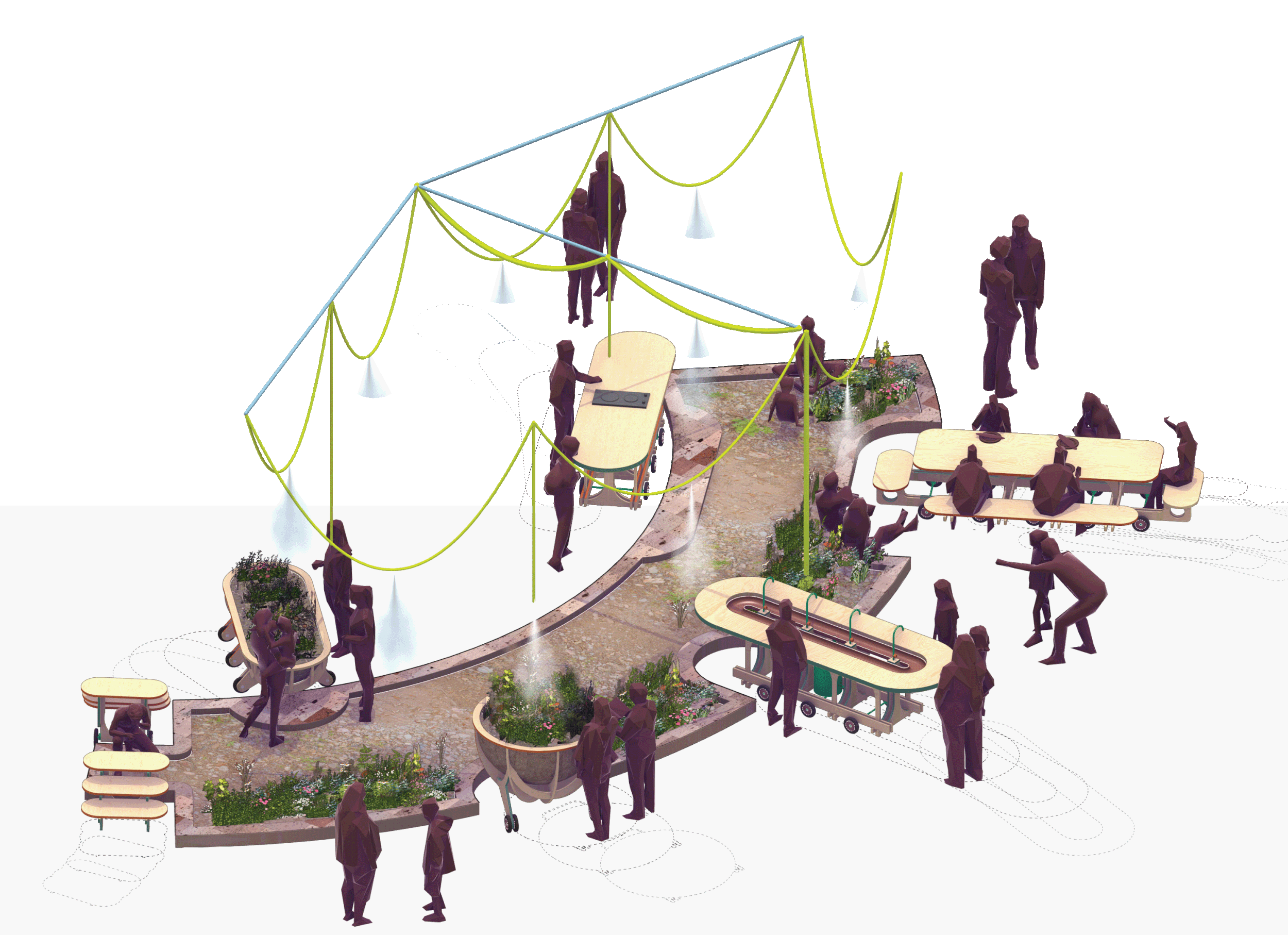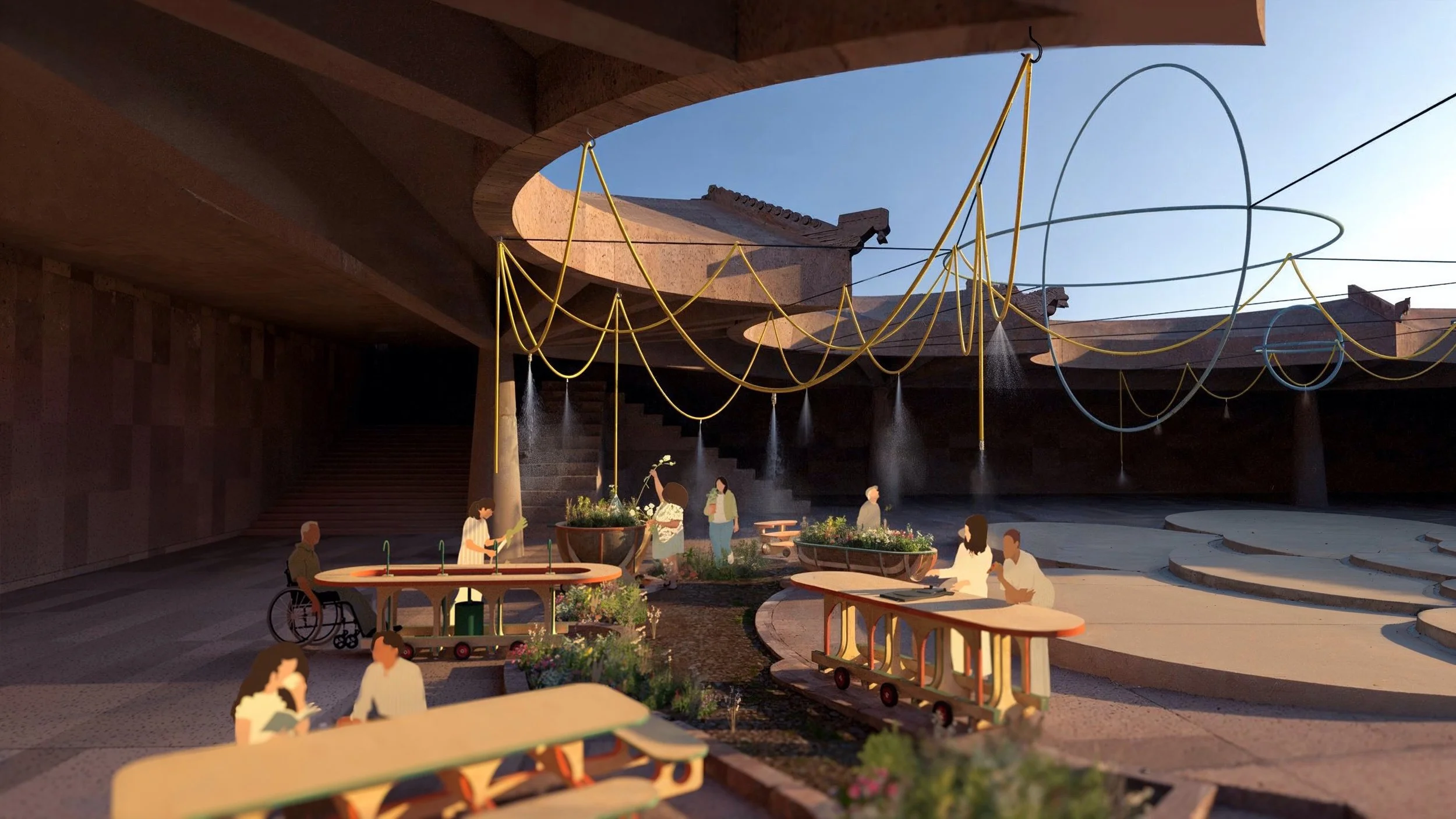Futures in The Air:
Countering Climate Propaganda with Praxis.
2025 Armenia Biennial Entry.
"Futures in the Air" responds to the urgency turbulence, the erasure of futures through war, and the co-optation of environmental movements. Inspired by Jonas Staal’s Climate Propagandas Congregation, it reimagines Yerevan’s Republic Square metro station as a counter-COP29—a space to challenge greenwashing and envision climate futures rooted in justice, decolonial practices, and ecological kinship. The December 12, 2022 blockade in Arcakh , disguised as “environmental protests,” revealed a new form of weaponized ecological activism—now echoed globally by petro-monarchies at COP29. The project takes form as a living library—an open space where ecological activists, artists, farmers, and citizens gather to share knowledge and imagine non-extractive futures. At its heart is the preparation of Zhingyalov hats, an Artsakh flatbread made with over 30 herbs, honoring indigenous practices of earth stewardship. Rejecting institutionalized summit formats, the installation centers climate discourse through acts of planting, foraging, cooking, and dining. Movable wooden modules, integrated with an irrigation and misting system, will support herb cultivation at a farm in Kapan months before the opening.
Design Team - Tigran Kostandyan, Farah Alkhoury, Iyad Abou Gaida, Andrea Molina Cuadro . Special thanks to Marina Balayan and Araz Shahnazari.
-
Futures in the Air , provokes a counter-COP29 that responds to the urgent notion of “up in the air” by centering political turbulence and the negation of futures brought by war and the manipulation of environmental movements. Inspired by Jonas Staal’s “Climate Propagandas Congregation,” this project reimagines Yerevan’s Republic Square metro station as a counter-summit—a space to challenge institutionalized greenwashing and imagine alternative climate futures rooted in justice, kinship of knowledge, and decolonial and indigenous practices.
Air is visible through various forms of custodianship, understanding that air is not only above us but also in the ground, water, soil, lungs, cells and food-webs_ Air can also be used as a tool of oppression and choking. The weaponization of the environment in Artsakh transforms air into an arena of surveillance, intimidation, and control. Here, air carries layers of violence: High levels of CO2 toxic contamination from burning forests , the blockade-induced stagnation that chokes ancestral lands, and the vaporization of the Sarsang Reservoir, cutting off water and electricity from communities sustained by the land and mountains. This is not air as a neutral medium but as an agent deeply entangled in geopolitics and environmental degradation.
The latest blockade of Artsakh on December 12, 2022 , under the guise of "environmental protests," marked the emergence of a new form of weaponized environmental activism. This campaign, now echoed on the global stage at COP29 by petro-monarchies, represents an alarming co-optation of ecological concerns for political gain—turning climate activism into climate propaganda.
Futures in the Air is formalized as a space of environmental praxis, a living Library where knowledge about the form of environmental practice, activism and existing is Imagined, performed and recorded. The installation serves as a gathering space for ecological activists, artists, thinkers, custodians of lands, farmers, cooks, citizens, writers, young and old, moms and dads, to collectively explore spatial, non-extractive, and ecological modes of imagining/producing futures.
During the opening and the closing of the Installation we will host a knowledge sharing session centered around the process of making Ժինգյալով հաց (Zhingyalov hats ), an Artsakh recipe that requires over 30 herbs with կարմանձուկ (Chervil), խազազ (Few-Flowered Garlic) and ճռճռոկ (Chickweed) at its center. This practice honors indigenous traditions of earth stewardship and sustainable living.
Instead of employing the form of a parliament, a common trope of institutionalized idealization of democracy, this summit frames climate discussions around acts of planting, foraging, chopping, cooking, and dining. Each stage of the process is designed as a movable module fabricated out of wood, soil,and burlap fiber. The growing of herbs will take place within a farm in Kapan, 4-months before the opening. Utilizing the site’s existing water infrastructure, an integrated irrigation and misting system will be installed within the courtyard of the Republic Square metro station.
Through workshops, performances, and the installation, the project aims to reframe the role of air and the atmosphere: not as tools of oppression and choking, but as vital components of an interconnected ecosystem. The installation through public engagement will act as both a critique and a call for coming together, fostering collective vision and crafting environmental and geopolitical futures.














